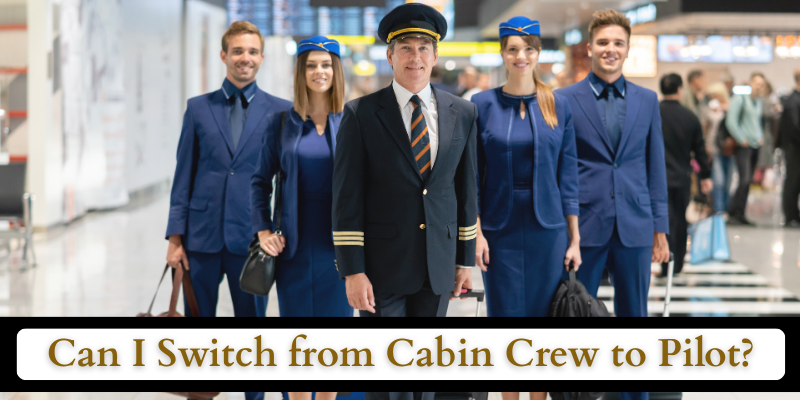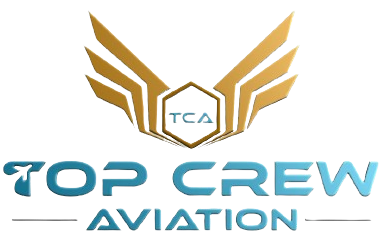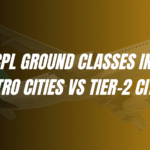
Have you ever looked out of the cockpit window as a cabin crew member and thought, “I want to be the one flying the plane?” If you have a passion for aviation and a deep desire to progress in the industry, switching from cabin crew to pilot could be the career move of a lifetime. Many cabin crew members share this dream, and the great news is that it’s not only possible but also a rewarding and achievable transition.
In this comprehensive guide, we will explore how you can make the switch from being a cabin crew member to a pilot. We’ll cover the qualifications, training process, career path, and what you need to do to make the transition smoothly. Whether you’re just beginning your journey or already considering taking the next step in aviation, this guide will equip you with everything you need to know.
Why Do Cabin Crew Members Make Excellent Pilots?
Before diving into the details of how to become a pilot, it’s worth understanding why cabin crew members are so well-suited to the role. If you’ve been a cabin crew member for some time, you already possess valuable experience and skills that can be applied in your journey to becoming a pilot.
- In-depth Knowledge of Aircraft Systems: As a cabin crew member, you already have a basic understanding of how aircraft work, from the cabin layout to safety protocols. While you may not be operating the aircraft, your familiarity with aircraft systems and operations gives you a significant head start in understanding the more complex machinery and flight systems as you pursue your pilot training.
- Strong Communication Skills: Communication is one of the key components of a pilot’s job. You are already accustomed to interacting with passengers and other crew members, which is invaluable when coordinating with air traffic control, your co-pilot, and ground crew as a pilot. Being able to maintain clear, concise communication during high-pressure situations is something you already practice.
- Customer-Focused Mindset: As cabin crew, you are trained to prioritise customer safety and service. This experience aligns with the pilot’s role in maintaining not just the technical and safety aspects of the flight, but also ensuring that the flight is as comfortable and stress-free as possible for passengers.
- Strong Work Ethic and Teamwork: Working as part of a team, whether with other cabin crew members or coordinating with pilots, helps you develop the teamwork skills necessary for piloting a plane. You already know how to collaborate under pressure—an essential trait for any pilot.
Step 1: Understand the Requirements to Become a Pilot
If you’re considering transitioning from cabin crew to pilot, you must meet certain criteria and go through specific training. The path to becoming a pilot may be long and requires a significant investment of time and resources, but the reward is a fulfilling and dynamic career.
Meet the Basic Eligibility Criteria
The first step is to ensure you meet the basic eligibility requirements to start your pilot training. These criteria will be specific to the country you are training in, but the basic standards typically include:
- Age Requirement: Most countries require aspiring pilots to be at least 18 years old before they can begin training. However, to hold an Airline Transport Pilot License (ATPL), you generally need to be at least 21 years old.
- Medical Fitness: Pilots must pass a medical exam conducted by an aviation medical examiner to ensure that they are physically fit for the job. The medical exam includes tests for vision, hearing, and overall physical health. You must have 20/20 vision (or corrected vision), normal colour vision, and an adequate hearing ability.
- Educational Background: A high school diploma or equivalent is the minimum requirement. However, having a college degree, particularly in aviation-related fields, can increase your chances of success and may provide you with additional career opportunities within the aviation industry.
Choose the Type of Pilot License
There are different levels of pilot certification, each with varying requirements. To become a commercial pilot, you will need to decide which type of license is most appropriate for your career goals. The most common licenses are:
- Private Pilot License (PPL): This is the first and most basic level of pilot certification. It allows you to fly private aircraft for personal, non-commercial purposes. A PPL requires a minimum of 40 flight hours.
- Commercial Pilot License (CPL): If you wish to fly as a paid professional, you will need to obtain a CPL. A CPL allows you to be employed as a commercial pilot, flying passengers or cargo. This license requires additional flight hours (usually 200-250 hours).
- Airline Transport Pilot License (ATPL): This is the highest level of pilot certification, allowing you to serve as a captain for commercial airlines. To obtain an ATPL, you need at least 1,500 flight hours and must pass a series of written and practical exams.
Step 2: Flight Training and Education
Enroll in a Flight School
After meeting the basic eligibility requirements, you will need to enroll in an accredited flight school. Flight schools offer both theoretical instruction and hands-on flight training. They will teach you essential aviation concepts such as aerodynamics, flight rules and regulations, weather patterns, navigation, and flight planning. Be sure to choose a flight school that is certified by the relevant aviation authority, such as the FAA (Federal Aviation Administration) or EASA (European Union Aviation Safety Agency).
Log Flight Hours
Building flight hours is one of the most crucial aspects of becoming a pilot. You will need to log a significant number of hours flying actual aircraft before you can obtain your license.
- PPL: Approximately 40-60 hours of flight time.
- CPL: Between 200 and 250 flight hours.
- ATPL: 1,500 hours or more.
Flight hours are accumulated through your training and flight practice. These hours are essential not just for fulfilling the licensing requirements but also for gaining the experience necessary to operate an aircraft safely.
Simulator Training
Many flight schools also use flight simulators to provide realistic training experiences without the cost or risk associated with actual flying. Simulators allow you to practice a variety of emergencies, difficult flight manoeuvres, and adverse weather conditions that you might not encounter frequently during actual flights.
Step 3: Gain Experience and Build Your Resume
As with any career, experience is crucial. After obtaining your CPL, you’ll need to build hours and experience to qualify for more advanced positions. Many pilots start out working as flight instructors or flying smaller aircraft for charter services to gain hours and enhance their resumes.
- Flight Instructor: Many pilots start as flight instructors, helping other aspiring pilots build their hours while simultaneously gaining their own experience.
- Regional Airlines: Working for smaller regional airlines can offer valuable experience before advancing to larger commercial carriers.
Gaining experience as a first officer (co-pilot) on regional flights will help you build your hours until you are qualified to move into larger commercial aircraft.
Step 4: Apply for Airline Jobs
Once you’ve completed the required flight hours and earned your ATPL, you can begin applying for pilot positions with major airlines. As a former cabin crew member, you may have a unique advantage. Your knowledge of the airline’s operations, customer service experience, and familiarity with aircraft will make you a standout candidate.
- First Officer: Most pilots start as first officers (co-pilots), working under a captain and learning the ropes of larger aircraft.
- Captain: After gaining more experience and completing additional training, you can become a captain, overseeing flights and managing the cockpit crew.
Conclusion
Switching from cabin crew to pilot is a challenging yet highly rewarding career transition. Although the journey requires substantial training, dedication, and perseverance, it’s achievable for anyone passionate about aviation. As a cabin crew member, you already possess many of the skills needed to succeed as a pilot. With the right mindset, a solid flight training plan, and continuous learning, you’ll be flying high in no time.
Start your journey today, and transform your dream of becoming a pilot into a reality!
Frequently Asked Questions
No FAQs found.



